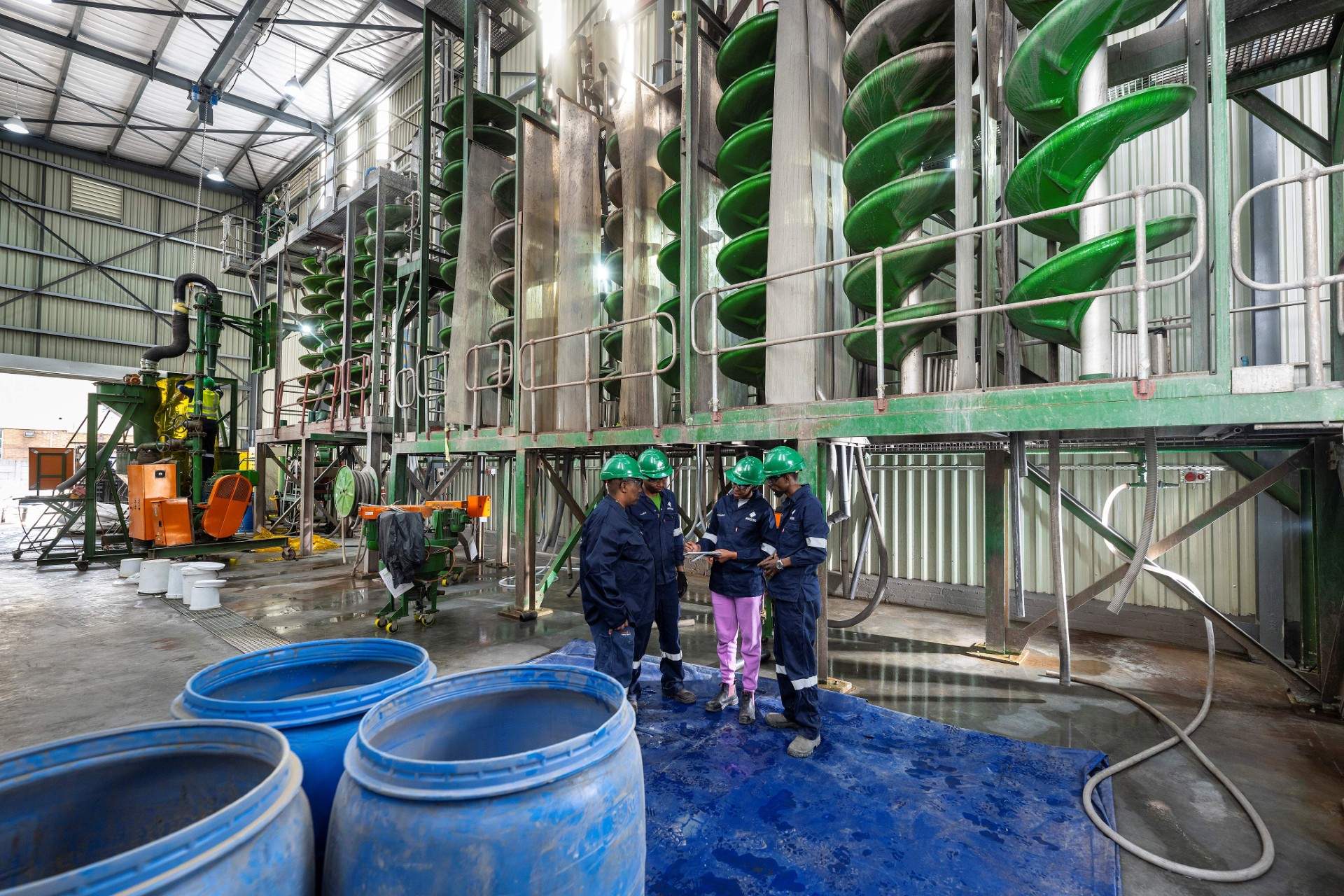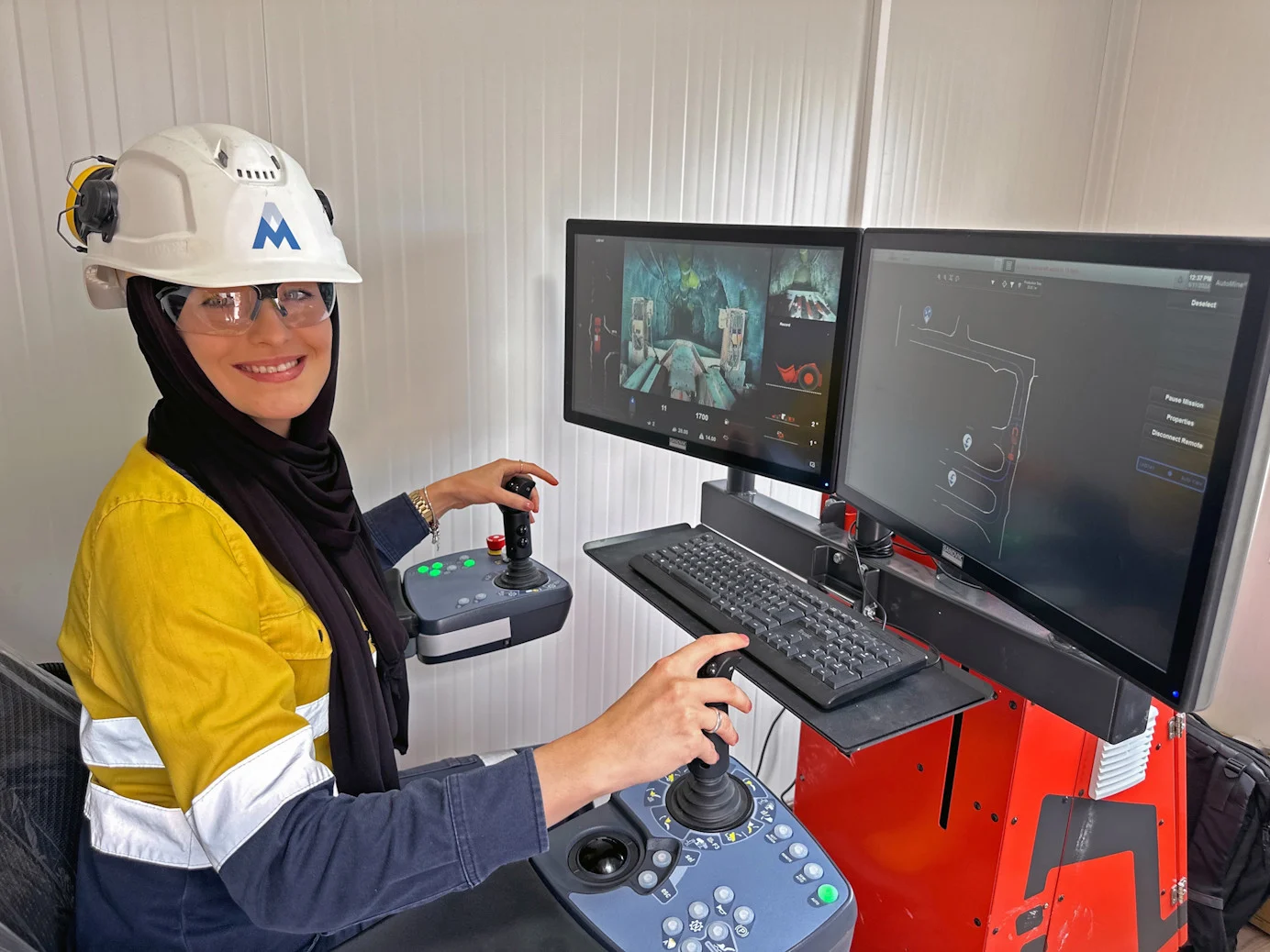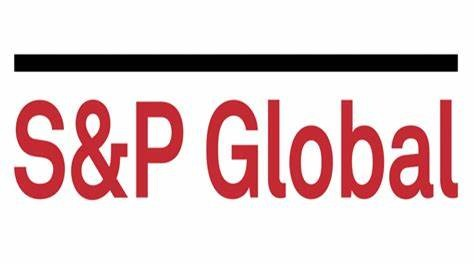Mineral Exploration: Trends & Developments 2002
Last year, 2002, was not notable for an influx of mineral exploration dollars, but it was a time for refining and enhancing existing geophysical technologies. Significant new developments will affect future exploration. Activity focused on the oil and gas industry. The trend towards mergers and reorganization continued.
Corporate Highlights
EiKon Envirotec Technologies Inc. (Concord, ON) is a new company resulting from the merger of Pico Envirotec with PetRos Eikon. EETI offers airborne and ground navigation systems, magnetometers and gamma-ray spectrometers. Bundled QC software provides a database and editing, filtering, line plots, gridding and contouring tools. The database is accessed by Emigma, which offers advanced modelling, inversion and imaging tools for magnetics and electromagnetics.
Firefly Aviation Ltd. (Calgary, AB) started commercial airborne geophysical operations in May 2002. Firefly has completed over 70,000 line-km of high-resolution aeromagnetic (HRAM) surveys in Canada. The company specializes in fixed-wing surveys, data processing and interpretation. Its first international project began in January 2003 in West Africa with a 150,000 line-km survey.
Fugro Ground Geophysics (Perth and Sydney, Australia and Toronto, ON) was formed from personnel and equipment of the former Geoterrex, Tesla-10 and Scintrex ground geophysical divisions. Fugro Ground specializes in potential field measurements with 3-D induced polarization (IP) acquisition and processing.
Fugro Instruments (Sydney, Australia), formerly Geo Instruments, was renamed after its acquisition by Fugro NV. The company will continue to manufacture the GMS-2 magnetic susceptibility meter and the GCM-2 hand-held conductivity meter, and it will develop new instruments.
McPhar Geosurveys Ltd. (Newmarket, ON), evolved from McPhar Geophysics Ltd., is under new ownership. The company offers contract services including gravity, magnetic, electromagnetic (EM), and gamma-ray surveys, either ground-based or airborne. Data are processed, mapped, imaged and interpreted in Newmarket.
Sefofane Geophysics (Pty) Ltd. (Maun, Botswana) was formed early in 2002 for surveys on the African continent. The company is associated with Sefofane Air Charters, and can field a wide range of aircraft. Developing Technology Inc. (Newmarket, ON) provides the instrumentation, geophysicists, technicians, and data processing. GeoExploration Services, a geophysical contractor also based in Maun, provides project management.
Airborne Geophysical Surveying
Developing Technology Inc. (Dev-Tech) delivered several helicopter-borne systems, including a MiniMAG-FB system to the Geological Survey of Japan. This system features a custom-built rigid-boom airfoil for a Scintrex CS-2 cesium magnetometer and a three-component fluxgate magnetometer.
Fugro Airborne Surveys reported that a number of aircraft were outfitted with the Triax magnetic gradiometer system. The company flew 60 surveys and 60,000 line-km in Africa since January 2002. The helicopter division acquired over 50,000 line-km of high-resolution EM data in the Northwest Territories and Nunavut, contributing to the discovery of several kimberlite pipes.
Geotem systems were deployed on surveys for base metals, diamonds and nickel in North America and in Africa, as well as for hydrocarbon exploration in Canada and in Australia. The new Geotem1000 has been in use since October 2002. Noranda and the University of Quebec are participating in a joint research project to develop improved interpretation tools for Megatem surveys within the Abitibi Province.
Sander Geophysics Ltd. (Ottawa, ON) completed a large survey in Saudi Arabia using three Cessnas with tri-axial magnetic gradiometers. Extensive modifications were made to the aircraft to ensure that the systems were extremely quiet magnetically. The resulting wingtip sensors are almost as quiet as the tail sensor, an industry first. Sander flew several surveys in South America and the Middle East for oil industry clients, using the AirGrav system.
Sefofane Geophysics (Pty) Ltd. won a 101,000 line-km HRAM survey in the Okavango Delta for the Geological Survey of Botswana. The project used two Cessna C-206 aircraft equipped with wingtip-mounted Scintrex CS-2 magnetometers and Pico Envirotec’s new AGIS data acquisition system.
Terraquest Ltd. (Toronto, ON) carried out airborne surveys for kimberlite, oil, gas, and precious metals exploration in North and Central America. Its small Heli-Mag system flew a number of kimberlite programs in the Arctic, Ontario and Quebec. The company claims its Heli-Mag system produces better results than many other similar systems because the sensors (magnetometer, GPS, video) are located in the bird. Equipment upgrades included the installation of the Pico Envirotec AGIS data acquisition system and a new horizontal magnetic gradient system on Terraquest’s Navajo.
In Airborne Data Acquisition and Processing news, Condor Consulting (Wheat Ridge, CO) provided processing and modelling for airborne EM surveys. It expanded its inventory of case studies with the addition of Voisey’s Bay and an update to its Reid-Mahaffy Field Guide. Both studies integrate processing with geological data to create PowerPoint presentations.
Fugro Airborne offers digital video mosaics in conjunction with its airborne surveys. The images can be layered in any GIS application and linked to the geophysical data. Fugro’s Johannesburg office developed FasDas, a new system of acquisition and data processing that obtains 1,000-Hz data with real-time compensation and filtering.
IGM (Swindon, Wilts, UK) announced that Geosoft Inc. (Toronto, ON) launched Grid3D, an add-on package to its Oasis Montaj applications. Grid3D will also convert the grids to volume models, and allows picking of values and co-ordinates from the displayed 3-D objects.
Terraquest worked with Edcon’s (Denver, CO) pre-programmed drape flying program on almost 40,000 line-km of oil and gas surveys. The company found that this technique insures good data sets where host structures are mapped at considerable depth.
In Aeromagnetic Surveying, Aeroquest Ltd. (Milton, ON) introduced a fixed-wing gradiometer consisting of wingtip pods and tail stinger mounted on a Navajo Chieftain. The company’s aircraft flew 65,000 line-km since its introduction in mid-2002.
GEM Systems, Inc. (Richmond Hill, ON) released the SuperSenser based on optically pumped potassium vapour technology that increases magnetic sensitivity five to 10 times over conventional technologies. The sensor can be mounted individually in an aircraft Stinger or can be combined in a multi-sensor configuration.
Goldak Airborne Surveys (Saskatoon, SK) added a second tri-axial gradiometer aircraft. Each Navajo PA-31 aircraft has four Geometrics G822A cesium magnetometers and RMS Instruments AADC II aeromagnetic compensators.
Advances in Airborne Electromagnetic technology saw Aeroquest improve its AeroTEM system. Full waveform recording was added to allow processing of the on-time response for better detection of high-conductance targets. AeroTEM is credited with the discovery of FNX Mining’s Powerline nickel-copper deposit in Sudbury, Ont.
Aeroquest flew mostly North American surveys with its IMpulse system, a six-frequency helicopter EM system designed for mineral exploration and geologic mapping. An IMpulse system was sold to the China Aero Geophysical Survey & Remote Sensing Center, in co-operation with Scintrex Ltd. (Concord, ON).
Geotech (Aurora, ON) developed and flew a new digital helicopter time domain system dubbed the Scorpion. Three systems are under construction and will be ready for commercial surveys early in 2003. This fixed geometry, concentric transmitter-receiver system was designed for maximum transmitter output while weighing approximately 250 kg. Scorpion features on-site selectable repetition times, computer-selectable waveforms, and digital noise suppression.
Geotech undertook a project supported by Ontario Minerals Exploration Technologies (OMET) to develop a digital airborne
natural field system. It is based on the Earth’s natural alternating EM field. A deep conductor in highly resistive surroundings will produce high natural field anomalies even at depths of one kilometre. This new technology was successfully flown in helicopter over the Reid-Mahaffy test site. Also, it can be easily carried in a fixed-wing aircraft stinger. Commercial systems are expected to be available in late 2003.
Terraquest reported good progress with the development of a multi-frequency EM system mounted on a Navajo. The characteristics of the system are being refined based on results of test flights. The system is expected to be fully operational by late winter 2003.
Developments in Airborne Radiometric Surveying have obvious potential for reducing mineral exploration costs. Exploranium (Mississauga, ON) developed a gamma-ray spectrometer system primarily for application in nuclear incidents. It starts with the push of a button, and it can be sent off in a drone aircraft (or truck) without trained personnel, transmitting the results and GPS data for mapmaking in real-time.
Ground Survey Techniques
In Data Processing and Positioning news, Advanced Logic Technology (Luxembourg) released CoreCAD, the first drill core description package to run on a hand-held PC. CoreCAD features digital data capture, voice recording, and graphical interpretation. It can integrate with wire line log, core image, thin section, and core assay data.
Encom Technology Pty Ltd. (Sydney, Australia) has included drillhole data in its integration and interpretation tool, Profile Analyst. The 3-D environment integrates surfaces, bitmaps, volumes, and drillholes. Input can include EM, gravity or magnetic data from airborne or ground surveys.
Geonics Ltd. (Mississauga, ON) announced the Allegro hand-held computer is available as an option for its ground conductivity meters and metal detectors, as a component of the DAS70 data acquisition system. Allegro includes a real-time data display, rechargeable Ni-MH batteries, and additional input connections for simultaneous collection of EM and GPS data.
Through OMET, Quantec Geoscience (Toronto, ON) demonstrated 3-D Quest, the process by which fully integrated data sets are quantified through physical property logging, tested with sensitivity analysis, and finally surveyed and queried for deep targets. The company provided the first-ever demonstration of the deep Titan 24 MT IP surveys in Canada, also through the OMET program, and case study material is available.
In Borehole Geophysics, Advanced Logic introduced its ABI40, the next generation of acoustic televiewers, which processes each ultrasonic wave train in real-time. The new 40-mm diameter, Acoustic Borehole Imager tool is a multi-echo system. After digital recording, on-line processing of the acoustic data is made by the attached digital signal processor (DSP).
Delta Epsilon Instruments upgraded its line of borehole logging equipment. This included an improved cable layering device for its portable winches, a 24-V battery pack with integral charger, and the introduction of an uphole power supply. A Windows CE version of DELogger software was developed for hand-held computers.
Flexit (Vallentuna, Sweden) expanded the SmartTool for drillhole surveys with the introduction of the SingleSmart series. SingleSmart systems are upgradable in the field to full MultiSmart standard by purchasing “unlocking” key codes.
IFG Corp. (Brampton, ON) completed its Dual Rate Gyro orientation probe, BIC02, for boreholes. The new North Seeking Gyro orientation probe (BIC-03) is currently being tested and will be available sometime in 2003. The BIC-03 can measure absolute positions anywhere in the borehole relative to the Earth’s geographic co-ordinate system. A new density tool was developed by IFG, the Micro Density probe (BMD-01), which measures the backscattered gamma-rays from a 10-microcurie Cs137 source contained within the housing. A major advantage is that licensing or special training for operators is not required because of the low source activity.
Instrumentation GDD (Sainte Foy, QC) developed its SSW probe combining conductivity and magnetic susceptibility to define ore boundaries and grade in nickel mines. The SSW probe is being employed to log blastholes. With SSW information, mine engineers load explosives selectively, cutting dilution rates.
Lamontagne Geophysics Ltd. (Kingston, ON) completed its UTEM 4 large-loop EM transmitter. The new transmitter achieves, at 2- to 4-Hz base frequencies, a precision and stacking time comparable to those of a UTEM 3 transmitter at the standard 31-Hz base frequency. With a 1,700-m2 loop of AWG 14 wire (90 kg), it can produce a peak-to-peak dipole moment of more than 50 million Am2 over a wide range of frequencies. The prototype transmitter has been used for borehole measurements since late last year.
Marine Magnetics (Richmond Hill, ON) developed a new Overhauser total-field magnetic sensor for boreholes. The Magnum unit measures the Earth’s magnetic field with a sensitivity of 0.02 nT and achieves an absolute accuracy of 0.2 nT, regardless of environmental conditions. In addition, the Magnum sensor never requires calibration, compensation or adjustment.
Mount Sopris Instrument Co. Inc. (Golden, CO) and Advanced Logic developed a new DSP direct link log data acquisition system that can run on any notebook PC. The Matrix system uses software to decode digital telemetry schemes from many logging tool manufacturers. The new 1-Mb/sec, 16-bit DSP system automatically identifies tool telemetry.
Quantec Logging Services Inc. (a division of Quantec Geoscience) offers acoustic and optical televiewer services with oriented structural true dip and strike. Also new is improved statistical characterization of physical property logs with automatic interpretation of lithologies and ore-waste discrimination based on physical properties.
Robertson Geologging Ltd. (Deganwy, UK) introduced a 25-mm-diameter focussed induction probe for conductivity measurements in small boreholes. It introduced a slimmed-down 43-mm water quality probe with new options for nitrate and chloride measurements in addition to pressure, temperature, dissolved oxygen, redox and pH. The new RG Mini-Winch is an electric unit weighing 19 kg and capable of logging speeds up to 17.5 m/min with up to 150 m of 3/16-inch wireline. The company released a new version of its RG Winlogger data acquisition software.
In Ground Electromagnetic developments, Crone Geophysics & Exploration Ltd. (Mississauga, ON) produced a new digital pulse EM receiver for use in surface and borehole time domain EM surveys. Samples in 4.0-microsecond time slices are combined into standard or user-defined windows. Crone has been using the CSIRO HTS-Squid magnetic sensor in place of its coil sensor to search for very high conductance targets.
More countries are using Dualem Inc. (Milton, ON) EM instruments. The Dualem-2, Dualem-4 and Dualem-2/4 have been sold to government survey organizations in the United Kingdom and the United States.
The CM-032 conductivity meter developed by GF Instruments (Brno, Czech Republic) complements the CM-031 and CM-138. The new instrument, operated from a built-in palmtop PC, is of a medium working length (205 cm) and depth range (3 m) and weighs 8 kg. Apparent conductivity and in-phase are continuously displayed and stored.
Instrumentation GDD developed the MPP probe to instantly measure relative and absolute conductivity and magnetic susceptibility of rock samples. The company boosted the GDD transmitter to a full 2 kW and coupled it with the Honda 2000iC 2-kW portable generator. This relatively light but high power unit will favour the more diagnostic dipole-dipole survey configurations. The company reported that in winter snowmobile operations the Beep Mat records not only the complete EM profile, but also a digital magnetic profile coupled with a GPS, for detailed survey maps. Further Beep Mat refinements have resulted in routine detection of medium strength conductors below 1.5 m of overburden, and with bigger Beep Mats, below
3 m.
Geonics developed the EM31-3 ground conductivity meter capable of variable depth measurement in a single dipole orientation. The EM31-3 incorporates three independent receiver coils on a single boom. Geonics introduced a high power version of its EM61 time domain metal detector, the EM61-HP, which provides an eight-fold increase in the signal received, resulting in 45-80% increase in the depth of detection.
In Ground Magnetic Surveying, GEM Systems (Richmond Hill, ON) developed a new generation of GPS functionality as a built-in option in all GEM’s ground systems. GEM provides advanced navigation capabilities, including lane guidance to keep the operator within pre-defined width; local grid referencing; automated rotated grid referencing; up to 1,000 programmable waypoints; and DGPS post-processing. As well, GEM completed a v6.0 upgrade of its ground magnetometers. Enhancements include 25% more sensitivity, improved efficiency, better positioning, more memory, and much faster processing and display speed.
The new FM256 fluxgate gradiometer from Geoscan Research (Clayton, Bradford, UK) has data collection between one and 16 samples/m, survey speed up to 0.4 samples/m, and resolution of 0.05 nT. It can be operated in single mode or in dual mode, which cuts survey time.
Marine Magnetics (Richmond Hill, ON) developed its Sentinel base station magnetometer containing a battery pack and Overhauser magnetometer sealed in a pressurized housing. Sentinel needs only to be programmed once before it is sent into the field. When turned on, it performs a five-second test to determine whether the survey site is magnetically noisy. Sensitivity is 0.01nT and the non-volatile memory can store one million readings.
In Ground Penetrating Radar news, Sensors & Software (Mississauga, ON) developed an ice profiling system to measure the thickness of winter ice roads. The 12-V battery-powered GPR unit is towed behind a truck or snowmobile. The data are displayed in real-time as a cross-sectional image on the digital video logger in the vehicle. The unit can be towed at speeds up to 100 km/hour. Users can combine GPR data with GPS readings to produce plan-view maps of ice thickness.
Resistivity Surveying advances include GF Instruments’ release of the ARS-200E, an upgraded version of its ARS automatic resistivity system. Besides a new design of the main unit, the transmitter features increased output power. A new multi-electrode cable was specially designed for use with the main unit.
Further information is available from the Geological Survey of Canada, Room 235, 601 Booth Street, Ottawa, ON, K1A 0E8. E-mail : kbaker@NRcan.gc.ca or visit the GSC web site: www.nrcan.gc.ca/gsc/





Comments